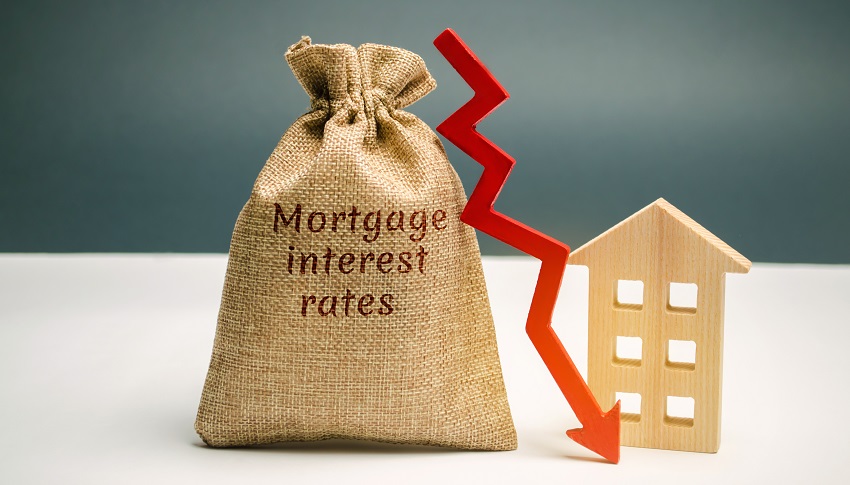A Brief History of Mortgage Rates
The Federal Home Loan Mortgage Corporation, also known as Freddie Mac, is a public government sponsored enterprise. They started surveying lenders in 1971 and in that year, for a 30 year fixed mortgage, the interest rate oscillated between 7.29% and 7.73%. At the time, between 1974 and 1981, the annual average rate of inflation also bgan rising at a rate of 9.5%. Lenders began increasing their rates in order to keep up, which led to a lot of instability for borrowers.
It’s important to remember that ultimately, interest rates are based on the bond market because home loans are bundled as securities and sold in the bond market. The news and media heavily influence bond prices which then leads to changes in mortgage rates. Very generally, mortgagee rates tend to go up when people perceive the economy as healthy and the government relatively stable. The government is essentially letting more money circulate by lowering interest rates because of a fear that inflation is also lower than feasible.
The Federal Reserve also stepped in and started increasing the federal funds rate, which is a rate banks and loan institutions use to charge each other for overnight loans. Because of this, 30 year fixed mortgage rates rose to a record high of 18.63%. Thankfully, by October 1982, interest rates stayed below 10% and inflation levels normalized.
The lowest level in history for US mortgage rates was 3.31% in November 2012. The projected projected interest rate for 2020 was 3.8% which indicates a consumer-friendly market.
What else affects your interest rate?
In summary, your mortgage payments consist of the principal amount (based on the value of your home) and the interest rate (which stems from paying extra for the loan).
Your credit score has a direct influence on your mortgage rate because it can indicate how risky it is for the lender to loan you the money. Hence, higher credit scores generally indicate a lower risk that you won’t make your payments on time and therefore, a lower interest rate. If your credit score is on the lower end, it may be smart to take some time to focus on improving it to save money on a future loan using a lower interest rate.
The location of your home can also influence your mortgage rate. States can vary so it’s important to do your research when looking at potential homes to buy.
The amount of money you’re willing to pay as your down payment also influences your loan because the more you pay as a down payment, the lower your interest rate because the lender is taking on less of a risk. A down payment over 20% usually will keep you from being required to pay for special mortgage insurance and can also reduce your monthly payments.
The length of your loan and whether or not you have a fixed or adjustable rate loan are also huge factors in your interest rate.
30 Year Fixed Rates VS 15 Year Fixed Rates
The most popular loan structures are 30-year fixed mortgages and 15-year fixed mortgages. Generally, interest rates for 30-year mortgages are higher because the lender takes on the added risk that you have longer to potentially default on your loan. The benefit of a 30-year mortgages is that the payments are lower and consumers benefit from the stability of a fixed and low monthly payment.
Some lenders offer other loan structures such as 10 or 40 year loan repayment plans.
What it boils down to is that longer payment plans offer lower monthly payments but larger amount paid overall in interest due to the higher rate.
What is an Adjustable-Rate Mortgage?
Adjustable-Rate Mortgages, or ARMs, have traditionally offered lower interest rates as compared to 30-year fixed-rate mortgages. These traditionally start off with a fixed, initial lower rate that after a few years, depending on the terms of the loan, is subject to change.
Consumers who expect to pay off their loans quickly or want those initial savings can opt for this loan but it can be tricky when the fixed term ends and the interest rate changes. Some homeowners also choose to refinance their ARM into a 30-year fixed mortgage once the initial term expires.
ARMs are described using two numbers, for example, 2/28. This indicates that there is a fixed rate for the first two years and a floating rate for 28 years. A 5/5 ARM offers a fixed rate for 5 years before the interest rate changes every 5 years afterwards.
What does this mean?
A lower mortgage rate means a more affordable home and can also mean that a consumer can potentially offer a more expensive home, due to the lower interest rate. When interest rates are higher, ARMs can potentially give you some flexibility and relief. That said, it would be easier then if the consumer plans on selling or refinancing before the rate changes.
When interest rates are lower, many homeowners look into refinancing their loans because they can typically replace their loan with a new one that has a lower rate. That way, you can save more every month.
If your home equity has gone up, you can also do a cash-out refinance to upgrade or renovate your home. Because you’ll be taking on the loan for more than you owe, you can use the extra cash to pay off other debt. Lower rates can also help you minimize the larger monthly payment.
It’s advised that when you are first looking to buy a home, you consult with professionals in your area, like a property management company. They can guide you on general loan types and practices for that area so you can figure out the type of loan you would prefer and how much money you can put upfront to purchase your home.
For more information on investing, specifically how much money you want to spend and what a realistic investment looks like for you, try out free and easy-to-use Cap Rate calculator here.
If you’re ready to get started with your investment, contact our office by heading here and we’ll get back to you as soon as possible.





